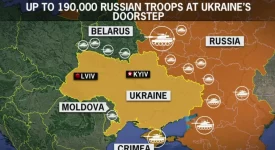Italy is facing a daunting task of integrating refugees despite a slower pace of new arrivals. In five years, 150,000 people have acquired a refugee status in Italy and another 155,000 asylum applications are pending. While other European countries such as Germany and Sweden also are facing the same challenge, Italy’s notoriously weak economy and high joblessness coupled with state red tape often struggles to provide for native-born Italians. Moreover, many newcomers are illiterate or do not have very developed literacy or other marketable skills.
The Italian government gave a greenlight to the country’s first-ever plan for integrating refugees in early autumns. The plan sets out priorities such as providing Italian lessons, work training and housing to people who get the right to live and work in the country, but doesn’t outline how Rome will attain the goals. Aid groups say that the existing efforts to assimilate migrants into the society falls short of the existing needs. “Italy focused a lot on the reception and first care of refugees, forgetting about their integration,” said Rev. Camillo Ripamonti, the president of Centro Astalli, a Jesuit refugee service. “Now integration is the weakest link,” he added.
The country did not see much immigration until the early 1990s but thousands of migrants have arrived in Italy in recently years. Yet, the number of seaborne migrants has dropped since summer. In 2017 about 114,000 have arrived compared with 180,000 for all of 2016. “If we can control the numbers of people arriving, we can integrate them better,” Italian Interior Minister Marco Minniti said. “We are now looking at numbers of arrivals that are difficult but not impossible to integrate.”
However, previous waves of refugees to Italy included many educated individuals with work experience, which allowed them to find employment relatively quickly. Moreover, many of the early arrivals relied on networks within their national and ethnic groups to find housing, jobs and support with minimal help from the Italian government. In contrast, only about 16% of the new migrants have a high school degree and 10% cannot read and write.







